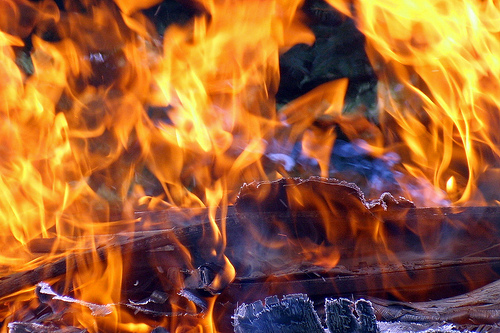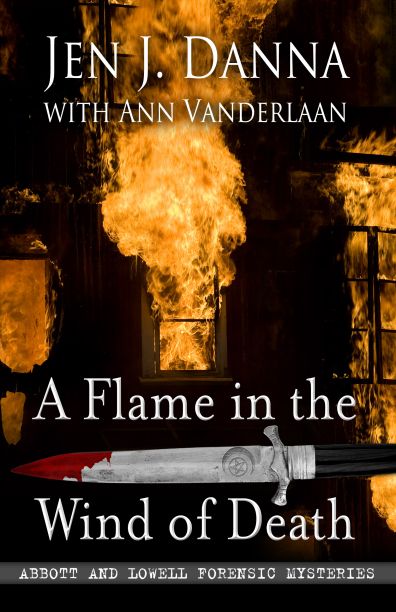Human Remains in a Fire Scene
/ When human remains are found in a fire scene, the most important question is if the victim died of natural causes before the fire, was killed prior to the fire, or died as a result of the fire. Depending on the extent of damage to the body’s soft tissues, a coroner or medical examiner may be able to advise investigators. In some cases, a forensic anthropologist will need to be called in as a consultant.
When human remains are found in a fire scene, the most important question is if the victim died of natural causes before the fire, was killed prior to the fire, or died as a result of the fire. Depending on the extent of damage to the body’s soft tissues, a coroner or medical examiner may be able to advise investigators. In some cases, a forensic anthropologist will need to be called in as a consultant.
When considering how to handle burned remains, the Crow-Glassman Scale (CGS) is a standardized sliding scale to describe the extent of burn injury:
- CGS-1: a typical smoke inhalation death, including some burning and blistering of the skin. Visual identification is possible.
- CGS-2: significant charring to the body, potentially including loss of the small bones of the hands and feet. Identification can be made by dental records and antemortem features of the deceased.
- CGS-3: increased destruction of the body, although the skull is still intact. Visual identification is impossible at this stage and even large bones of the body may be disarticulated (larger arm or leg bones). Possible identification by dental records and/or DNA. A forensic anthropologist may be required to determine age, race and gender based on the skeleton.
- CGS-4: total fragmentation of the skull and additional disarticulation of arm and leg bones from the body. A forensic anthropologist is required for any possible identification.
- CGS-5: completely cremated remains. There is no remaining soft tissue and any remaining skeletal components are fragmentary. Identification based on the remains themselves is highly problematic.
In A FLAME IN THE WIND OF DEATH, it is the discovery of a CGS-3 body that requires the expertise of Boston University’s Dr. Matt Lowell. When Matt finds out that Trooper Leigh Abbott is not on the case, he balks until she is assigned and the team is brought together once again.
If a body falls into the first two CGS categories, a medical examiner should be able to determine based on soft tissue if the victim was alive at the time of the fire:
- If the victim was alive and breathing during the fire, he or she would inhale carbon monoxide produced as a by-product of the fire. Carbon monoxide binds to the hemoglobin in the blood producing the stable complex carboxyhemoglobin, displacing oxygen and leading to chemical suffocation because of insufficient oxygen delivery to the tissues of the body. Carboyxhemoglobin can be measured in blood; any level above 50% is considered lethal, although death has been shown to occur anywhere in the range of 20 – 80%, depending on the age and health of the victim.
- If the victim was alive and breathing in hot gases from the fire, the soft tissues in the throat will show a) soot deposits, and b) evidence of searing from the hot combustion gases. Soot can also be inhaled to such an extent as to cause mechanical suffocation.
If the victim does not show signs of fire-related death, then it falls to the medical examiner or a forensic anthropologist, depending on the extent of the burn injuries, to determine probable cause of death. In CGS-1 and most CGS-2 cases, a regular autopsy will suffice. But CGS-3 and CGS-4 cases require the knowledge and skills of a forensic anthropologist.
One of the biggest difficulties in determining cause of death in burned bodies is the fact that bones fracture in the intense heat of a fire. So differentiating perimortem (at the time of death) vs. post-mortem (after death) injuries is crucial. In the following lab scene from A FLAME IN THE WIND OF DEATH, Matt explains the difference to Leigh:
“First, you need to understand the difference between fractures in wet and dry bone so you can tell perimortem fractures from postmortem fractures. I know you’re familiar with kerf marks and how a solid object passing through bone leaves an imprint behind. In the same way, heat-induced fractures leave their own microscopic and macroscopic signatures. Using these signatures, we can reconstruct both what happened and the order in which the injuries occurred. The challenge in this case is the conformational changes that occur in bone exposed to extreme heat—it changes shape so you can’t simply fit the pieces back together cleanly. But the crucial point is that once there is an existing first fracture in a bone, a second break can’t cross it. That’s how you can map the order of injury.”
“Handy,” Leigh said. “But can you tell if a break was there before the fire?”
“Yes. Heat fractures are only formed under specific circumstances—the bone dehydrates causing it to warp and shrink. When that stress becomes excessive, it results in an abrupt break similar to a sharp force trauma fracture.”
“Doesn’t that cause problems, then? How can you tell between fire damage and sharp force trauma?”
“It’s a challenge,” Matt agreed. “But wet bone behaves differently. First, heat-induced fractures only happen in dry bone—bone that’s charred black or calcined. Normal bone doesn’t fracture from heat stress because the moisture content gives it too much resilience.”
Leigh swiveled to stare at the bones on the gurney. “So if there’s a fracture in uncharred bone, it happened before the fire.”
“Exactly.”
It is this analysis, confirmed by electron microscopy to corroborate fracture speed that helps the team determine the method of the victim’s death.
We hope you’ve all enjoyed this series of posts on fire investigations. It’s a fascinating subject and it certainly added an extra level of complexity to the case for our team!
|
A reminder to our readers that A FLAME IN THE WIND OF DEATH releases April 18th and be available shortly thereafter. This is the third installment in the Abbott and Lowell Forensic Mysteries, following DEAD, WITHOUT A STONE TO TELL IT, and the e-novella, NO ONE SEES ME ‘TIL I FALL.
|
|
Photo credit: p.Gordon




 70.9%
70.9%